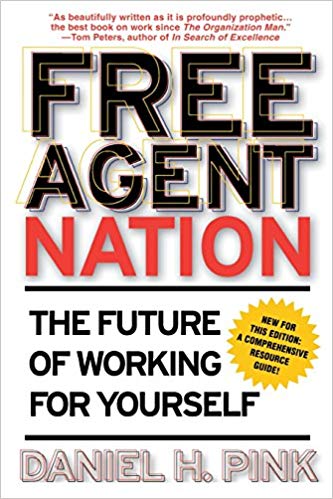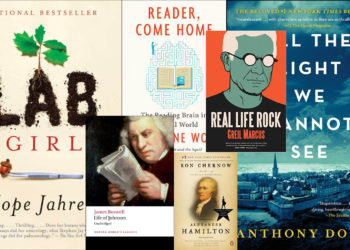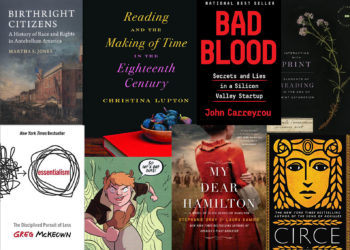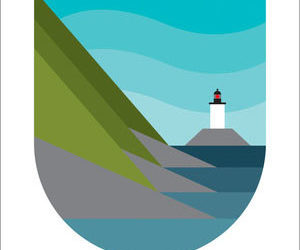Every year The Scholarly Kitchen compiles a list of the best books the Chefs have read during the year. This year there were enough responses to fill two posts of favorites! With so many books being added to the list of favorites every year, we wondered if there were any special titles that had been read in years gone by that left a life changing impression.
So this month we asked the Chefs: Can you describe a book that has had a lasting impact on your life?
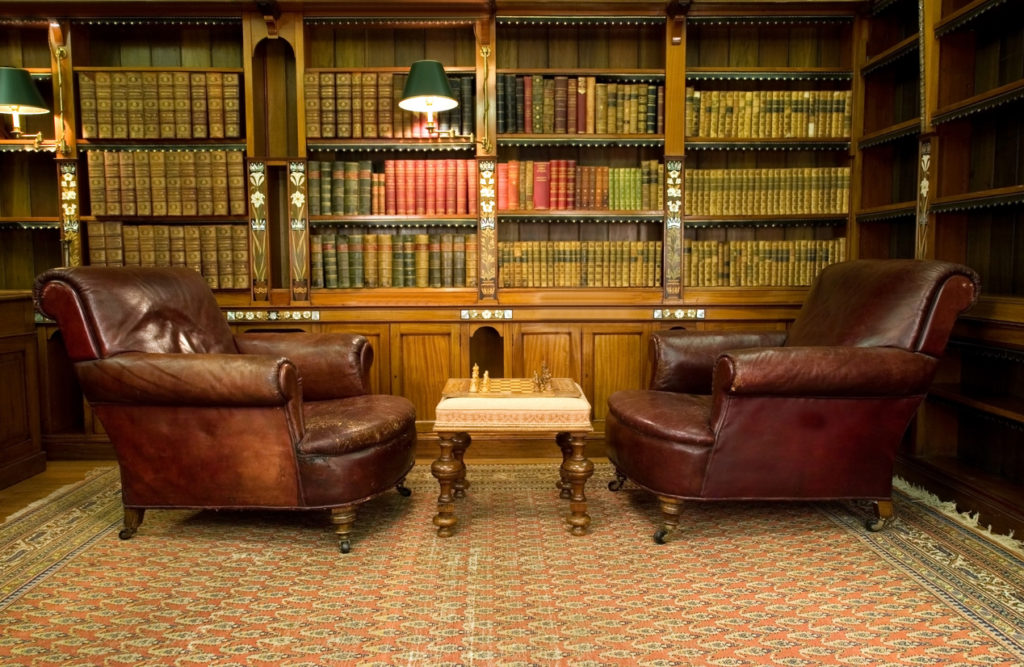
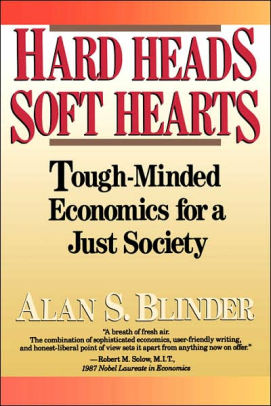 Rick Anderson: Alan Blinder’s Hard Heads, Soft Hearts: Tough-minded Economics for a Just Society had a huge impact on me when I read it in college, and has continued shape my thinking about (in particular) the scholarly communication economy ever since. The concept that I found most important, and most validating, was Blinder’s insistence that it’s not only possible, but also essential, to be both rigorous and data-informed in our decision-making, and compassionate and concerned about the impacts of our decisions on the real lives of real people — coupled with his warnings about the dangers of being simultaneously either soft-hearted and soft-headed, or hard-headed and hard-hearted. That balance is one that I have tried to maintain (with imperfect success, of course) in my own thinking and practice throughout my professional life as a librarian, a manager, an administrator, a commentator on scholarly communication, and a consultant.
Rick Anderson: Alan Blinder’s Hard Heads, Soft Hearts: Tough-minded Economics for a Just Society had a huge impact on me when I read it in college, and has continued shape my thinking about (in particular) the scholarly communication economy ever since. The concept that I found most important, and most validating, was Blinder’s insistence that it’s not only possible, but also essential, to be both rigorous and data-informed in our decision-making, and compassionate and concerned about the impacts of our decisions on the real lives of real people — coupled with his warnings about the dangers of being simultaneously either soft-hearted and soft-headed, or hard-headed and hard-hearted. That balance is one that I have tried to maintain (with imperfect success, of course) in my own thinking and practice throughout my professional life as a librarian, a manager, an administrator, a commentator on scholarly communication, and a consultant.
Joe Esposito: Three books disproportionately shaped who I am, or at least who I think I am, for better or worse. The first is a novel by John Barth, The End of the Road. This is not Barth’s best novel (in my view, that would be The Sot-weed Factor), nor is it my favorite book (that would be Gravity’s Rainbow); nor is Barth my favorite writer (Italo Calvino). But The End of the Road hit the fevered brain of a morbidly introspective 18-year-old with an annunciation of stunning implications: There is somebody else out there! This is an important discovery for a young person, and this tale of Jacob Horner, who was paralyzed (literally) by cerebration, was a constant companion until I, well, until I outgrew it. I recently read a kindred and superior book, The Dice Man, but it had no such effect as my mind was not fertile for planting.
Two nonfiction titles in particular shaped my way of viewing the world. I read the first in graduate school: The Cultural Contradictions of Capitalism by Daniel Bell. I don’t know if Bell is read much any more, but his insight, that capitalism is built on delayed gratification but must simultaneously stimulate consumption, is one that I see playing out in the U.S. today and has shaped my politics.
The other nonfiction book is The Tangled Wing by Melvin Konner. The subtitle says it all: Biological Constraints on the Human Spirit. This is a good news-bad news story: it’s good to find a book that seems to explain so much, but it’s bad that so few people view the world this way.
Books that changed your life, books with lasting impact: this is an exercise for youth, as only the young think that life is something that can be coherently illuminated. If I were 18 now the book that would set me on fire is Homo Deus by Yuval Harari. As it is, I lean back and admire and reflect warmly on all the young people Dr. Harari will inspire.
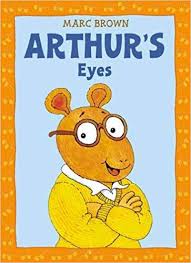 Jasmine Wallace: One of the first books to have a lasting impact on my life was Arthur’s Eyes by Marc Brown. Like the fictional character I was a young kid often teased for wearing glasses; and it was this book that helped me establish a strong since of self that I have carried with me well into adulthood. This book also initiated my love for reading, writing and storytelling. I think I might have checked this book out so many times that my name was on both the front and back of every line of the card catalogue insert. In fact, it was also likely the reason the librarian asked if I would read to the younger students at my elementary school. Yes, I still remember reading aloud, flipping through pages imitating the voice of the main character and his teasing classmates; and the joy I felt after having mastered the skill of reading upside down.
Jasmine Wallace: One of the first books to have a lasting impact on my life was Arthur’s Eyes by Marc Brown. Like the fictional character I was a young kid often teased for wearing glasses; and it was this book that helped me establish a strong since of self that I have carried with me well into adulthood. This book also initiated my love for reading, writing and storytelling. I think I might have checked this book out so many times that my name was on both the front and back of every line of the card catalogue insert. In fact, it was also likely the reason the librarian asked if I would read to the younger students at my elementary school. Yes, I still remember reading aloud, flipping through pages imitating the voice of the main character and his teasing classmates; and the joy I felt after having mastered the skill of reading upside down.
If it was not enough to have read this book nearly a million times, I took it one step further and wrote a very poignant 5th grade letter to Marc Brown letting him know how inspired I was with his story. Looking back, I realize it was the publisher who replied with the stock letter, signed with a stamped signature and flimsy bookmark; but at the time the reply placed me one step closer to my childhood dream of becoming an author. As an adult I’ve fallen in love with many new books from authors such as Margaret Atwood, Octavia Butler and Fyodor Dostoyevsky. But it was this children’s book that catapulted me into an insatiable quest to discover more stories and characters with which I could lose myself and be found at the same time.
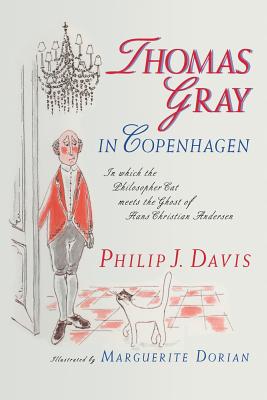 Lisa Hinchliffe: At the University of Illinois at Urbana-Champaign, where I am on the faculty, each faculty member is invited to select a book that is plated in their honor for tenure and promotion. I immediately knew which book I would choose: Thomas Gray Philosopher Cat by Philip Davis. When I was in college, I happened upon this book and, as a philosophy major, I couldn’t resist picking it up. A quote from this quirky story has sat in my brain and spurred my on during college, in graduate school, and thru the faculty ranks. It is still central to my
Lisa Hinchliffe: At the University of Illinois at Urbana-Champaign, where I am on the faculty, each faculty member is invited to select a book that is plated in their honor for tenure and promotion. I immediately knew which book I would choose: Thomas Gray Philosopher Cat by Philip Davis. When I was in college, I happened upon this book and, as a philosophy major, I couldn’t resist picking it up. A quote from this quirky story has sat in my brain and spurred my on during college, in graduate school, and thru the faculty ranks. It is still central to my
commitment to inquiry: “It’s a mystery, and I want to know the answer. The desire to know can become a passion. I don’t even know that it is possible to know, and that intensifies the mystery.” (p. 120)
David Smith: Life on Earth by David Attenborough. For those of you who didn’t grow up in the UK in the late 70s, Life on Earth was the ‘Jaws’ of the Natural History Documentary, the one that inspired and defined all other such flagship series from TV broadcasters around the globe. It is one of the finest examples of the Reithian principles of the BBC; To Inform, Educate and Entertain.
And there was a book to accompany the TV series. A HARDBACK (my first proper hardback book in fact) book that was bought for a nature loving bespectacled eight year old. I still have it. I read this book and at the end of it, I knew that I wanted to be a biologist. Those moments watching the tv series on a Sunday night in the winter of 1979 and reading the book introduced me to the scientific method, the wonders of our planet, and the Theory of Evolution. The book was not some lightweight table top accompaniment to the program, but a serious explanation of the scientific evidence that showcased how life on our planet evolved.
It is no exaggeration to say that this book kept me going when illness threatened my chances of even making it to University, and later when I was deep into what was a ‘challenging and exciting’ program of D.Phil research.
I’m a scientist, and biologist, and indeed a scholarly publisher because of the book that Sir David Attenborough wrote and published 40 years ago this coming January.
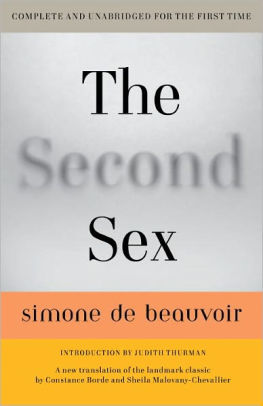 Alice Meadows: I am cheating and selecting two books, as they were both life-changing, but for very different reasons.
Alice Meadows: I am cheating and selecting two books, as they were both life-changing, but for very different reasons.
The first is a classic – Simone de Beauvoir’s The Second Sex, which I first read as a teenager, and have re-read several times since (in fact, it’s probably time for another reading!). She was the first person to open my eyes to the inherent sexism in our society, which (scarily, but not uncommonly) I had previously completely taken for granted and somewhat ignored. After reading The Second Sex — and then anything else by de Beauvoir I could lay my hands on — I applied to study anthropology at University College London, which was definitely one of the best decisions of my life — clearly not because I went on to be an anthropologist, but because, like de Beauvoir, it forced me to challenge so many of my assumptions about the world, something I still do and that continues to impact how I try to live my life.
Alison Mudditt: Choosing just one book is an impossible task, and so I’ll focus on one that has been with me for longest. I first came across Philip Larkin’s Collected Poems at age 15 in my O-level English Literature class, and it is the one book that has stayed with me at every stage of my life. As a teenager growing up in a devoutly Christian family but struggling with my own relationship with religion, Church Going was something of an epiphany to me, painting in concrete terms the paradox many of us find when our secular world collides with a spirituality that we find hard to accommodate.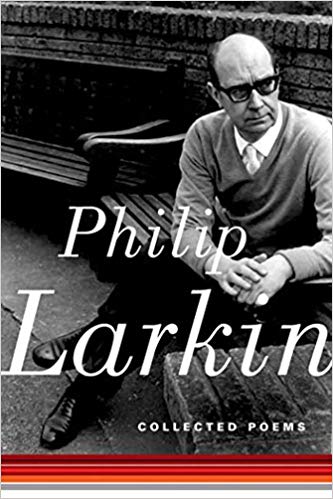
I come back to this volume regularly both at the more significant points in my life and simply on a quiet weekend. Even the dry gloom of his best-known poems has left lines that stick. After my parents’ death I found myself returning to An Arundel Tomb in which love and death seem to cohabit throughout, with love seemingly to triumph in the last line: “What will survive of us is love.”
But it’s a complicated relationship – in the years after his death, it became clear that Larkin the man was not simply gloomy but one whose private sentiments were rife with ugly prejudice and misogyny. Ultimately, that’s part of the complexity that still challenges me about his work (and seems again highly relevant in our current moment): can we separate a life from the art?
Over the past couple of decades living in the USA, I’ve found a deep familiarity of my home country – his essential Englishness — when I come back to this volume. It’s not a cozy picture of warm beer and cricket on village greens, but one that is more visceral and to me more authentic. And even though I share few of his discontents, there’s always a comfort in coming back to words I know so well.
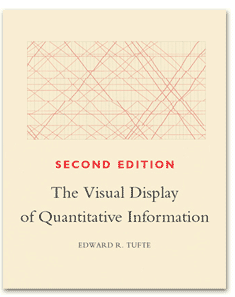 David Crotty: I was a working scientist from the mid-1980s to the early 2000s, a time that coincided largely with the shift in the tools we use to communicate science, from analog to digital technologies. My first talks were given using overheads, then later photographic slides, and my last talks were via PowerPoint projected from a laptop. For my first paper, photographs were taken on film through a microscope, developed, cut by hand and pasted to a white board, labels applied by Letraset, and then the whole thing was re-photographed to make a composite figure. Multiple copies of the composites were printed and mailed into the journal. For my last paper, all figures were taken as digital images directly to a computer, processed by Photoshop and submitted electronically.
David Crotty: I was a working scientist from the mid-1980s to the early 2000s, a time that coincided largely with the shift in the tools we use to communicate science, from analog to digital technologies. My first talks were given using overheads, then later photographic slides, and my last talks were via PowerPoint projected from a laptop. For my first paper, photographs were taken on film through a microscope, developed, cut by hand and pasted to a white board, labels applied by Letraset, and then the whole thing was re-photographed to make a composite figure. Multiple copies of the composites were printed and mailed into the journal. For my last paper, all figures were taken as digital images directly to a computer, processed by Photoshop and submitted electronically.
One thing that didn’t change, and that remains just as important today, is the power of good design. As a researcher, when you write a paper or give a talk, you are essentially telling the story of your work. The illustrations you use to present this story are crucial to your audience’s understanding of it, the credibility they see in it, and the significance they attach to it. If your images are clear, understandable, compelling, and convincing, your story is that much better, and that much more likely to be well-received. As a species, we’ve been doing art a lot longer than we’ve been doing science, but like science, there are clear protocols and methodologies for art that have been developed over time. If you understand and master these concepts, your outputs will be vastly improved. Knowing simple things like how a color wheel works or the basics of typography — which colors blend and which contrast; which fonts scale — allows you to generate an image where your signal can easily be discerned from background, or slides that can be read, even from the back of a large room.
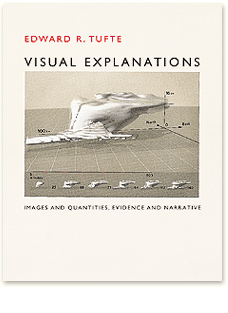 In the bioimaging lab where I did my postdoc, the works of Edward Tufte, particularly his first book, The Visual Display of Quantitative Information were considered our Bibles. The books themselves are beautiful works of art — filled with visually stunning images, printed on thick paper with 12-color separation and fold-outs, as Tufte makes his points through examples like Japanese railroad timetables and diagrams showing how to perform sleight-of-hand magic tricks. His explanation of “Chartjunk” (essentially removing all non-data and all redundant materials) will forever change the way you make (and see) figures. His third book, Visual Explanations contains a tour-de-force chapter on “Visual and Statistical Thinking” based around the explosion of the Challenger space shuttle, and how all the clues needed to predict the disaster were there, but presented so poorly that they couldn’t be seen.
In the bioimaging lab where I did my postdoc, the works of Edward Tufte, particularly his first book, The Visual Display of Quantitative Information were considered our Bibles. The books themselves are beautiful works of art — filled with visually stunning images, printed on thick paper with 12-color separation and fold-outs, as Tufte makes his points through examples like Japanese railroad timetables and diagrams showing how to perform sleight-of-hand magic tricks. His explanation of “Chartjunk” (essentially removing all non-data and all redundant materials) will forever change the way you make (and see) figures. His third book, Visual Explanations contains a tour-de-force chapter on “Visual and Statistical Thinking” based around the explosion of the Challenger space shuttle, and how all the clues needed to predict the disaster were there, but presented so poorly that they couldn’t be seen.
If you are doing (or reading or presenting) research, Tufte’s books are required reading (Envisioning Information and Beautiful Evidence are the other two). They will change your life, change the way you see things, and make you a better scientist. You’ll never look at a figure the same way again.
 Ann Michael: My first urge was to pick Oh, The Places You’ll Go By Dr. Seuss. I love that book. It has it all – ups, downs, slumps, the waiting place, achievement, success, and learning how to balance it all. All of life’s lessons!
Ann Michael: My first urge was to pick Oh, The Places You’ll Go By Dr. Seuss. I love that book. It has it all – ups, downs, slumps, the waiting place, achievement, success, and learning how to balance it all. All of life’s lessons!
You’ll get mixed up, of course, as you already know.
You’ll get mixed up with many strange birds as you go.
So be sure when you step.
Step with care and great tact and remember that Life’s a Great Balancing Act.
Just never forget to be dexterous and deft. And never mix up your right foot with your left.
But, my first choice would have to be Free Agent Nation by Daniel Pink. I read that book just before I went out on my own. It excited me to hear him describe the nation going from a cottage industry, through the industrial age that brought folks together and created barriers to entry, back around to a time when people could be connected and work in small groups, or even alone. Back in the early to mid 2000’s, when I read that book, I believed him. I have been out on my own, or working in small groups, ever since. He was inspiring (warning link to retired blog with a hideous “theme” that Typepad defaulted to).
He’s also the author of another one of my all time favorites, A Whole New Mind. Thanks, Dan!
Now it’s your turn. Can you describe a book that has had a lasting impact on your life?
Discussion
6 Thoughts on "Ask The Chefs: Books That Changed Your Life"
Nice reading list for 2019. Thank you.
my favorite? I wouldn’t say a book changed my life, but more recently Sunil Khilnani’s “Incarnations: A History of India in Fifty Lives” did change my perspective of the country’s history.
If you think you know India, wait until you read this book.
Three books have changed the way I think. The first is Nadezhda Mandelstam’s Stalinist-era memoir, “Hope Against Hope.” Her strong sense of right and wrong, of what human beings owe one another, provides an ethical standard that I try to live up to. The second is Andrew Solomon’s “Far from the Tree,” which made me rethink what it means to be human and humane. The third is George Saunders’ “The Tenth of December,” whose title story changed the way I think about aging and caring. All three, I hope, have made me a better person.
As an aspiring fiction author, one of the books that has had the most profound shaping experiences for me is “The Things They Carried” by Tim O’Brien. I read it in high school for Advanced Composition (a class I still remember quite dearly), and the chapter “How to Write a a True War Story” shaped a significant portion of how I view, understand, and execute fiction, most significantly in understanding that it is sometimes the most efficient and real way to communicate Truth, sometimes over and above non-fiction. There are others which have had a stronger impact over time, but this is the one I usually think of first as having had an immediate shaping impact.
I wish I could offer something more impressive but unfortunately, the book that most likely had the earliest and most significant impact on me would probably have to be Whitman’s Big Little edition of Road Runner “The Super Beep-Catcher”.
I got this book for Christmas when I was five and what amazed me about it was the gimmicky “Flip-It Cartoons” printed on the corner of the pages. It was a book I could both read and watch. Back in the day, Saturday was the only day you could really watch cartoons, study them, and they typically only ran once or twice, so if you missed it—it wasn’t like you could whip out your phone and catch it on YouTube—it was gone. With this book I could watch a cartoon anytime I wanted. I could study it frame by frame. This book sparked a lifelong interest in comics and cartoons and eventually a fascination with rights, licensing, adaptation into print media, and mass marketing. How could a cartoon be a book? It inspired me to go to the library at the end of my block and to learn more about cartoons and comics, and more about narratives and how they work, who owned a character or a story, how drawings work with text. That eventually led me to humorists like Thurber and Silverstein and Nash, which eventually sent me into the literature and poetry sections. For a kid who would be the first in his family to graduate college, whose home had few books of its own, that book was clearly the gateway drug that sparked my interest in both books and comics, and which led me into a local library that would eventually change my life.
Today I run a press that publishes scholarship on comics and cartoons, and on narrative theory. I also publish graphic novels and literary works. It’s hard for me not to see a direct connection between that trashy, pulpy, little book and what I’m doing today.
Love seeing how different books affected folks in various times during their lives (and careers). Here are two books that I think about when reading this post: https://tinyurl.com/y8obc7ob
Since graduate school, the book I carry with me wherever I go is Gaston Bachelard’s “Poetics of Space”.
